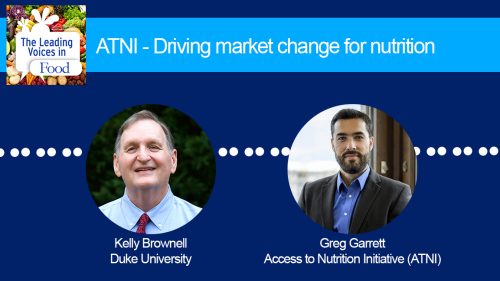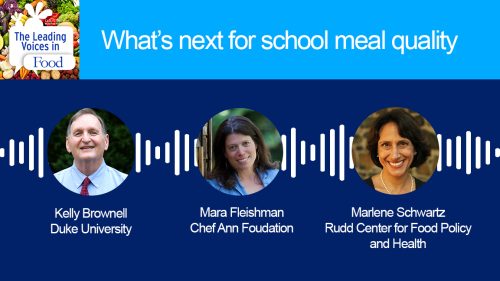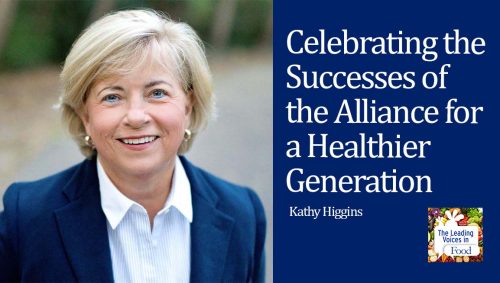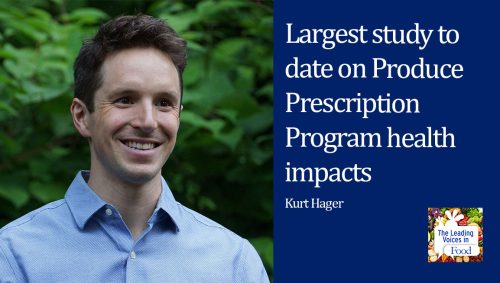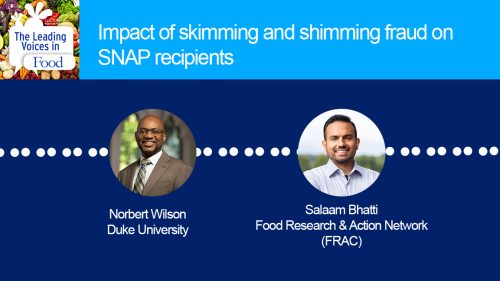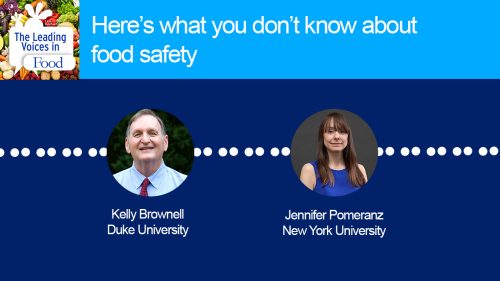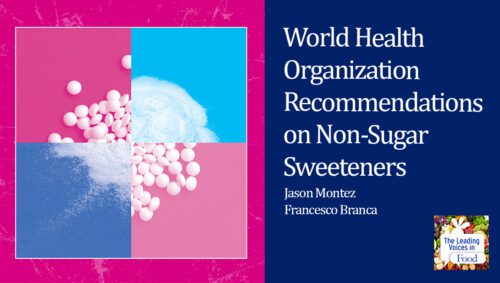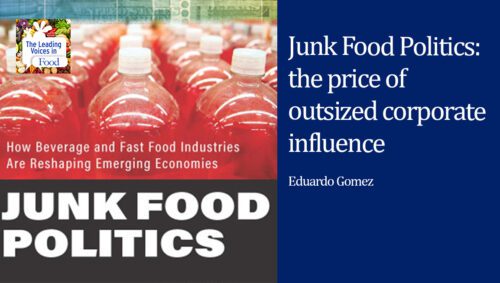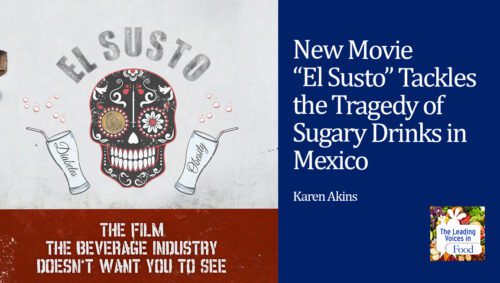The Leading Voices in Food
E99: How Soda Taxes Can Drive Equity and Community Wellbeing
Soda taxes now exist in about 50 countries around the world and in a number of US cities. They raise lots and lots of money. How would you suggest that the revenues be used? This podcast focuses on the connection between sugar-sweetened beverage taxes and racial and social equity. We’re speaking today with a champion of community-driven approaches to health equity and environmental justice. My guest is Xavier Morales, the executive director of The Praxis Project, the national organization headquartered in Oakland and dedicated to supporting communities, building power for health.
Subscribe: Apple Podcasts | TuneIN | YouTube Music | SoundCloud | PocketCasts | Radio Public
Tags: Addiction & Food | Childhood Obesity | Food Policy | Obesity | Soda Taxes |

Xavier Morales is the Executive Director of The Praxis Project (https://www.thepraxisproject.org/). He is a longtime advocate for community-driven initiatives to achieve health equity and environmental justice. Taking an expansive view of what constitutes good health and community wellness, he diligently works in partnership with community, professional and academic allies to improve health and justice. Xavier currently serves on the board of the Urban Peace Initiative, on the advisory board for Boston Medical Center’s Vital Village Network, and sits on the City of Berkeley’s Sugar Sweetened Beverage Panel of Experts. Keeping community health equity and justice at the center of his work, Xavier is a leader in campaigns to pass legislation to create a dedicated revenue source to combat diabetes and other preventable chronic diseases. Xavier is a frequent speaker for legislative briefings, health conferences, health justice gatherings, and in college/university settings. Xavier, a former Peace Corps volunteer (Hungary), is originally from Sanger, California and studied environmental sciences at the University of California, Berkeley and city and regional planning at Cornell University.
Interview Summary
I’ve been very impressed with the ideas that you have on this topic. So let’s just dive right in. Could you explain a little bit about the work that you and your colleagues do as part of The Praxis Project?
Yeah, at Praxis, we’re really focused in on helping communities power to improve health. And the way we see it is that a lot of these negative health outcomes that we’re seeing in communities are really driven by inequitable processes. And so what we do is we help organizations to build power to be able to address and transform these processes that lead to these inequitable outcomes. You can look at equity as a verb, or you can look at it as a noun. Both are very important. The noun, which is basically the outcomes, are very important to address, but Praxis really tries to home in on the verb space, the process of equity. And we do that leading with community power.
Thanks for that background. Now let’s get on to the soda tax. So the nation’s first soda tax was done in Berkeley, California. And you played a really important role in this, thinking especially about the use of the revenue. So let’s begin with this. Why is it so important that that community voices be heard when these policies are being considered?
I kind of consider myself a second-tier invite to the core group that had already conceptualized soda taxes. And people like Josh Daniels, Vicki Alexander, Laurie Cappotelli, Linda Mayo, Martin Bork, those were like the real core folks that were thinking about it, but they had the foresight to go and talk to others who had tried to pass a soda tax, people like Jeff Ritterman in Richmond, and folks from down in El Monte, Southern California, and people like Harold Goldstein, who had been championing this. But they’d been running up against very stiff industry opposition. And so the thing that Ritterman especially told this core group was you need to make sure that you have the communities at the table from inception, from as early on as you can because if you don’t, the beverage industry will come in, and they’ll start to organize. And so they brought in myself as a member of Latinos Unidos de Berkeley. And at the time, I was also the executive director of Latino Coalition for a Healthy California. And I happened to live in Berkeley. Vicki Alexander was brought in, and she was a very strong advocate for the African-American community in Berkeley.
What we were able to do working together was to design, again from inception, a soda tax that would benefit all aspects of the Berkeley community. So the initial reason for passing the soda tax was to fund our cooking and gardening programs in the schools. And we wanted to make sure that we could continue to do cooking and gardening programs in the schools. But knowing what we know about who pays soda taxes, and it’s typically folks who are lower-income, more recently arrived, and folks of color, that’s what the research shows us, we said, this is great to do cooking or gardening programs in the schools, but really we know that there’s some educational outcome disparities. So we want to make sure that there’s a focus on those children that may not be receiving the full benefit of the program. And secondly, we also know, given the population that I just mentioned typically consume sodas and is going be paying the soda tax, we wanted some funding to go directly back into the communities. We want a direct benefit because otherwise the beverage industry comes in and really does use this regressivity argument very effectively, and if anything, that’s beat back a number of these initiatives before Berkeley. By bringing the community in, we were able to say, yes, cooking and gardening program in the schools, that’s great. But, we also want to make sure that we’re doing programming in the communities to transform the conditions, increase knowledge, and make sure the infrastructure is there for people to be able to, when they know what the healthy choice is, have the healthy choice available.
Wow, that’s really impressive. So let’s talk a little bit more about specifically what the monies are being used for in Berkeley. So you mentioned that the basic overriding aim, which is to help address equity issues, but what are some of the ways the money is being used?
We’ve been really fortunate in that we’ve been able to use about 40% of the funds to support cooking and gardening programs in the schools. We love that we can do that for all of our children. But, the other part is going into some of these more vulnerable communities that have experienced higher rates of obesity, heart disease, stroke, and tooth decay. We’ve been able to work with community partners to deliver health programming. We were very happy that we could target the funding into the communities that have experienced the worst outcomes related to the over-consumption of sugary drinks.
We’ve been able to invest quite a bit in Healthy Black Families, the Multicultural Institute, East Bay YMCA, that actually runs a Headstart program, and then also Berkeley Youth Alternatives. Also we were able to fund another program called the Diabetes Education Prevention Program through the YMCA. All of these programs, serve the populations that the beverage industry actually targets. And research shows that they target brown and black communities. And there’s research that shows that African-American children, brown children, actually see two to three times more ads for sugary drinks than their white counterparts do. So this starts to show in some of the behavior patterns and consumption patterns.
What we’re doing with this funding is trying to change norms, and we do that through education. Healthy Black Families, what they do is they have a cohort of mothers-to-be, and they do nutrition education. They all go to the grocery store together and shop together. They look at products, they read labels, and then they bring the food back to a kitchen, and they actually cook together communally. And there’s a lot that’s happening there. It’s not just the education. It’s also like a support group. If there’s any issues that are coming up, there’s need, assistance that’s needed, there’s referrals that are made. It’s a big program.
And then also the East Bay YMCA, the work that they do with the Headstart. They’ve hired a couple of musical artists to come in. And these musical artists use song and dance to teach the children about what is nutritious and what is not nutritious regarding beverages and foods. It’s really great when you see these little kids all doing these little dances and singing these songs. And the feedback that we’ve seen, their parents are coming back and saying, what are you guys teaching our children? This is great. Because the children themselves are now starting to hold their parents accountable, trying to teach their parents about what’s a healthy beverage. And then also this site is leveraged. The trusted relationship that these teachers have with the parents, it’s a safe space, and it’s also used as a food distribution site, and that’s ancillary benefit that’s available.
And then the last group I’ll talk about real quickly is the Multicultural Institute. Talk about vulnerable populations! They work with day laborers. These are the folks that are hired by the day. They typically stand on street corners, and they’re picked up to go do construction or gardening, but they’re hired by the day. And these folks almost never receive any programming or any education on healthy beverages. And so the Multicultural Center staff do trainings with these day labors as they’re standing on the corners to talk about what’s a nutritious drink and what’s not a nutritional drink and why it’s so important to make sure that they are consuming healthy beverages. And we’ve seen over time that we’re seeing thermoses filled with water and coffee. Because of the trusted relationship with these trainers from the Multicultural Institute, they’re also able to refer them to other services that they might need, whether it’s dental or primary care. And then the Institute also does programming for the children of these working families. They use art. They do nutrition education. And they have the children do art projects based on what’s healthy and what’s not healthy. And we’re getting the same kind of feedback. These kids are going home, and they’re having an effect with their parents as well.
So, what we’re seeing is that these funds are changing the norms with the children, their families, but also the trusted relationships are being leveraged to provide other beneficial services for these populations.
Well, what an impressive array of efforts are being funded by the revenues from the soda tax. One thing I’d like to ask is something you alluded to earlier, which was the beverage industry behavior and reactions when soda taxes get introduced. Could you tell us a little bit more about that?
It’s incredible the opposition that the beverage industry mounts against, not just soda taxes, even warning labels, anything that seems that it will diminish their sales. In Berkeley, I remember the first time I saw someone from the beverage industry because we had our first public meeting. Our strategy team had been meeting for a number of months, designing the soda tax, deciding what was going to be taxed, what wasn’t going to be taxed. Was it going to be an excise tax or a retail tax? Was it a specific tax or a general tax? So we were meeting for months debating all of those things. And then we decided we were going to have our first meeting. We were going to open it up to community, and there was this really helpful young man that was helping us set up tables, take down tables, and was really nice to everyone. I mean, the guy was just so personable and so charming. But at the end, Sarah Socar, our campaign manager, started to wonder about him. Like, who’s this guy? We’ve never seen him before. And he’s really trying to become central to what we’re doing. It turns out the guy was beverage industry. He ended up becoming the main operative in Berkeley. He kind of tried to sneak in and be part of the conversation.
When it came to advertising, oh my God. They bought up almost every bus shelter, every public space. And so everywhere you saw no-on-D advertisements. So on the sides of buses at the bus shelters, we have a metro station called the BART, Bay Area Rapid Transit. And so every possible space they purchased, including when you walk up to buy your tickets, they had huge 20-by-20 stickers on the floor, no on D. They overwhelmed us. It was shock and awe the way they were doing it. They filed a lawsuit on some of the language in our measure.
But you know, the interesting thing is that when they wanted to file the lawsuit, they didn’t have any standing because they didn’t have anyone living in Berkeley. So the same young man that was helping us at that first community meeting, he actually moved to Berkeley so that they could file this lawsuit. I think one of the more insidious things that they do is, because they really try to drive wedges with communities of color on this issue and talk about the regressivity and try to sow distrust that the city’s not going to use the money the way they’re saying, very misleading. And they do that primarily with communities of color while they hired folks of color to come in. And most of these guys were from out of town. And they hired them to canvas in our neighborhoods. So they would be at the farmer’s market, and they presented it like they had a petition against this soda tax. And the interesting thing is, you know, we had very committed folks to get this soda tax passed. Our folks used to go and engage with them, and they almost ended up feeling badly for the person because for the person that was doing this work, it was just, they needed a job. They weren’t very deep on the issue, but they were just there to get these signatures. And it was overwhelming what they did on that. But they spent about $3.2 million here, which a lot of places that may not seem like a lot of money, but for us. That was the largest amount of money that was ever spent on trying to pass a local measure. It was just crazy.
But the way we fought back was through house parties. We call them house parties. They mean a different thing than what they meant back in the ’90s when I was growing up where folks would bring their neighbors together. And we’d come in and we’d do presentations to talk about what this soda tax was. And it was neighbors talking to neighbors, and it meant something different when I came to the door, and I said, hey, I’m your neighbor. I live over here on the corner. And they’re like, oh yeah, we knew the person that you bought the house from. This is great. How do you like the neighborhood? So we would engage in those kinds of conversations. Then I’d talk through exactly why we were going after a soda tax, what we were going to do with the funding. And then I also talked about how we expected the beverage industry to respond and then what the beverage industry was going to say. And then we would answer those questions right there at the door with them. This is what the beverage is going to say, and this is the response. This is the truth here.
Originally when we did our polling, Berkeley polled at about 66% that we would pass this tax, but that was before the beverage industry came in with all their funds. But the best thing was that at the end of this all, after all was said and done, because of these neighbor-to-neighbor connections, we actually won at 77%, completely due to the trusted relationships. And also because there was no way for the beverage industry to get a foothold and drive wedges, especially with our communities of color, because we had been at the table from the very beginning.
Well, what a great example of community organizing and hearing community voices in this process in a way that could overcome that massive spending by the industry. So Xavier, you and I have spoken before about the four-point plan that you have that I think is really pretty inspiring to think about how to address these issues in places that might be considering such taxes in the future. Could you describe the plan?
Yes. Since we were able to win in Berkeley, other municipalities have actually followed the same pattern, an excise tax, a general tax, having a community advisory board that advises the city on how to invest funds. And so there’s been a lot of learning on my part that when we talk about equity, what does it really mean? I wasn’t always in this space. I also looked at equity as outcomes. I’d never thought, and this is a no-brainer. I don’t know why I’d never thought of this. But if we really want to change things over the long-term, we really have to change the systems and practices and environments that are leading to those outcomes. When you go up against a very deep-pocketed and moneyed opponent, it’s like the health advocates on their own can’t win this. We really have to partner with community, but the community has to see what’s in it for them.
So again, there’s been a lot of learnings. This was 2014 that we won this Berkeley soda tax. And since then, I’ve been working on some other initiatives around soda taxes around the country. And what I’ve really landed on when we talk about equity and soda taxes is these four points, that, one, we really need to make sure that we’re investing the funds in the areas that have the highest need. And to me, highest need means the areas that are experiencing the worst outcomes related to the over-consumption of sugary drinks, be it type-two diabetes, obesity, heart disease, stroke, tooth decay.
And then the second one is invest in the priorities that the community sets across the determinants of health. Maybe the issue in that community isn’t water, but maybe the issue in that community is that they don’t have access to full-service grocery stores. And maybe what the community wants is some kind of farmer’s market or little pop-up produce stands in their neighborhood or even some of these mobile vendors that sell vegetables and fruit. So really what we need to do is figure out what the community’s priorities are and invest in those.
And then third, it’s really important to fund the actual groups in the community that have the strongest relationships with the target communities to be the deliver of programming and services. We have to bring them in because not only do they have the pulse of the community, but they also have the needs, and they also know the context, and they’ll know what types of programming will work best. And then the fourth one is that when we make these investments, we should try to make the investments in a way that, yes, not only addresses the community’s priorities today in a way that uses community infrastructure to deliver the services. But how can these investments actually increase the capacity of the broader community, the infrastructure of the community in a way that transcends the life of the grant that we’re giving them?
Again, those four points are invest in the areas that have the highest need. And then second, invest in the priorities that the community sets. Then the third, utilize the community groups, the ones that have the strongest, most trusted relationships with these priority populations to deliver the programming and the services. And then fourth, try to include funding for things that increase this health infrastructure that will transcend the life of the grant.



